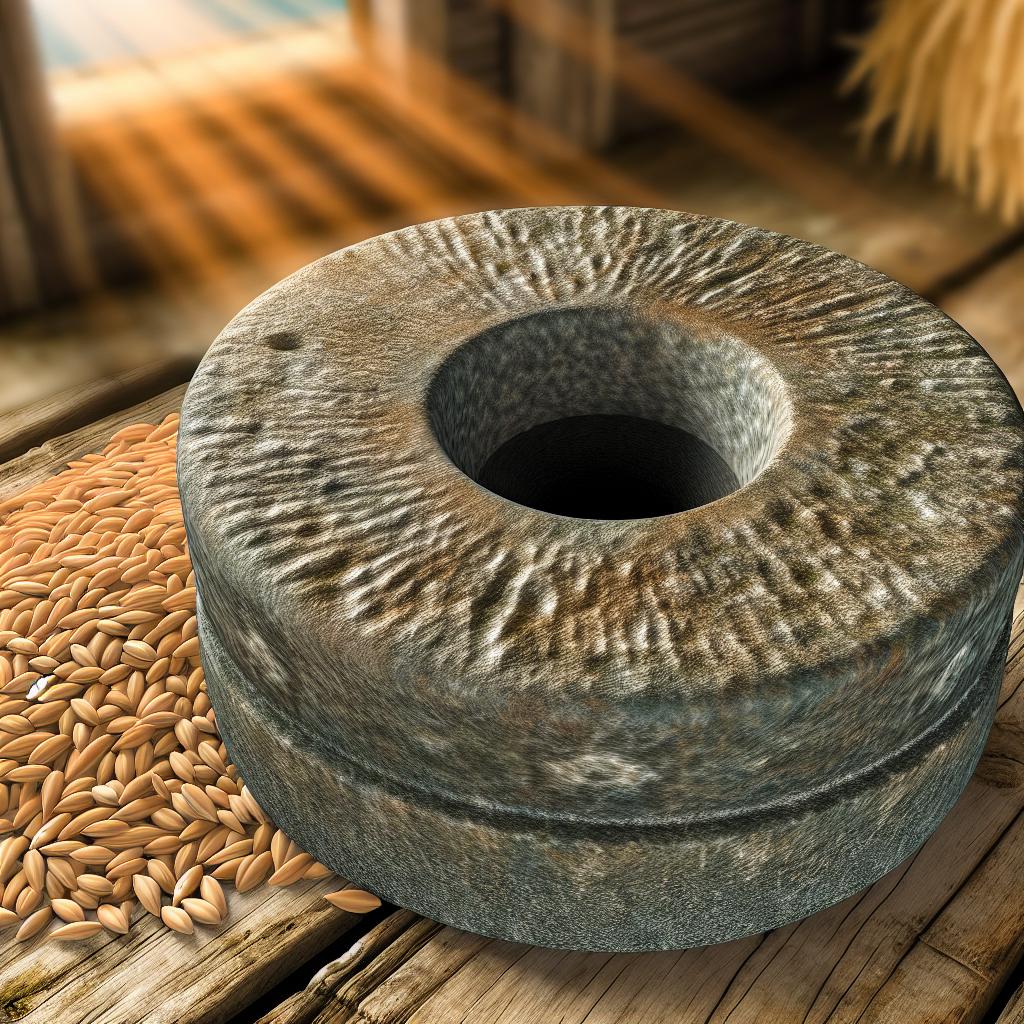Understanding Millstones
Millstones have been fundamental tools in the process of grinding grain into flour since ancient times. These stones have been pivotal in the development of agricultural societies by making it possible to process cereals into food products that have long shelf lives, like flour. Typically composed of stone, these devices are ubiquitous in historical contexts, where they were used in mills powered by humans, animals, or natural forces. This article will delve into the components, materials, operational principles, historical significance, and modern relevance of millstones, offering a comprehensive overview of this critical tool.
Components and Materials
Millstones are constituted of two primary components: the bedstone and the runner stone. The bedstone remains stationary, providing a stable platform where grains are distributed. In contrast, the runner stone rotates, grinding against the bedstone to process the grain. The design of these stones is crucial, as they must facilitate a smooth and consistent grinding action for efficient grain processing.
Traditionally, locally sourced stones such as granite, sandstone, or quartzite were selected for millstone crafting. The material selection was vital because the stone needed to be durable enough to endure continuous and rigorous grinding. At the same time, it had to be porous to allow friction and air movement during milling. This porosity helps maintain an optimum temperature during grinding activities, which is crucial in preserving the flour’s quality.
Operation of Millstones
The operation of millstones is based on a simple yet effective principle. The upper stone, known as the runner stone, rotates on top of the stationary bedstone. Grain is introduced through a central hole referred to as the eye of the runner stone. As the runner turns, centrifugal force and the sloped design of the grooves on the stone surfaces propel the grain outward.
The grooves, or furrows, located on the millstone ensure systematic crushing and grinding of the grain. Between these furrows are flat sections called lands, which keep the grain from becoming overly pulverized. The flour’s texture can be altered by adjusting the stones’ gap and the runner’s rotation speed. Thus, millstones can produce flour ranging from coarse to fine textures, depending on the requirements.
Significance in Historical Contexts
Millstones have held immense economic significance throughout history. They were integral to village life and were central to controlling flour production, a staple commodity for bread-making in many cultures. Owning a mill often equated to economic control and significant influence over food distribution within a community.
Moreover, millstones were embedded within taxation systems during various historical periods. Authorities frequently levied taxes based on the quantity of flour produced. This made millstones not just essential for food production but also valuable assets in economic management within societies. Thus, they served both functional and economic roles in historical communities.
Modern Relevance
Despite the advent of technological advancements in milling equipment, the foundational principles of milling with millstones have largely persisted. Modern roller mills, for instance, still exploit the grinding concepts established by traditional millstones. However, these modern mills deliver increased efficiency and consistency in grain processing, owing to technology-driven enhancements.
Millstones continue to inspire modern milling techniques, highlighting their timeless relevance even in today’s technologically advanced world. For more in-depth information on the historical and technological evolution of milling, individuals can explore further reading materials and specialized resources like historical societies or dedicated publications on the subject. These resources offer substantial insights into the impact of millstones on both past and present milling practices, highlighting their enduring legacy in human civilization.
